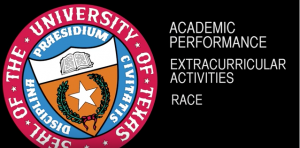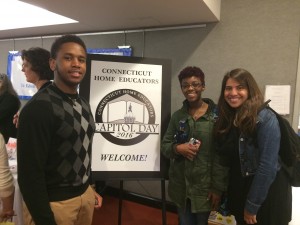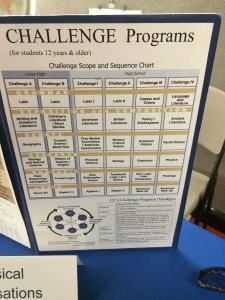Introduction:
In 2012, the Fisher vs. Texas case arose in the U.S Supreme court. Abigail Fisher, student suing against the University of Texas, believed she was denied acceptance because of the absence of racial preference. Within the midst of these conversations, educators, students, and legislators have all questioned the idea of affirmative action. On one side, affirmative action, depending on the person or social group defining it, can view affirmative action as a positive term in higher education. On the other hand, affirmative action may also bring a negative connotation to higher education. In attention to when affirmative action was first introduced compared to affirmative action in publicity of the Fisher vs. University of Texas case, my research questions ask the following: How did advocates envision “affirmative action” when they originated the term by 1965, and how have opponents tried to redefine this term in the Fisher case?
Although affirmative action was first introduced in context of employment in the United States, legislators and advocates of this reform believed in equal opportunity regardless of their “race, creed, color, or national origin” (Burstein, p. 373). This was the idea of affirmative action by 1965. When interpreting the definition of affirmative action in 1965, people in the United States were able to understand the positive movement this term brought for underrepresented groups; affirmative action was used as an optimistic term. Over the past five decades, legislators and advocates, as well as new audience like educators, students, and parents, begin to question the language affirmative action brings varying case by case. More specifically, the Fisher vs. University of Texas brings in the term affirmative action as a negative discrimination towards Abigail Fisher due to her background (white student from Texas). Looking at both situations, appointing the importance of language and wording is critical to the origins of the term-affirmative action. Language and the definition of this term, while having a basic context, continue to be a very broad term with many loopholes. This is especially with the attempt to understand the difference between diversity requirements (quota) and the idea of affirmative action on college campuses.
Background- The Civil Rights Act of 1964:
The late 1950’s and early 1960’s brought many several major events in the fight for Civil Rights in America. It was a time where many regions of the United States continued to treat people of color, in particular African Americans, as second-class citizens (Pilgrim). Laws like the Jim Crow laws kept people of color separate from white people in any way possible (Pilgrim). This meant separation in schools, restaurants, restrooms, and transportation due to the color of their skin (Pilgrim).
From these ongoing events of discrimination, affirmative action was first introduced within the context of the 1961 Executive Order 10925. President John F. Kennedy issued The Executive Order 10925 in order to create the Committee on Equal Employment Opportunity. This would provide instructions to projects financed with federal funds taking affirmative action to ensure the hiring and employment practices are free of racial bias (“Equal Employment Opportunity and Executive Order 10925”).
Sadly after the death of John F. Kennedy, Lyndon B. Johnson continued on Kennedy’s path to an inclusive America for all. He did so by signing into law the Civil Rights Act of 1964, which would be a step closer to eliminate the ongoing struggle for an equal employment opportunity (Burstein, p. 373). During the1964 signing, the court ordered that affirmative action would be used so that employees would be treated with equal opportunity regardless of their “race, creed, color, or national origin” (Burstein, p.373).
While it was introduced in 1961 and 1964, affirmative action was not fully defined until 1965, when President Johnson gave a commencement speech to the graduating class at Howard University. President Johnson speech underlies the concepts of affirmative action emphasizing that civil rights laws alone are not enough to solve discrimination: “We seek not just freedom but opportunity—not just legal equity but human ability—not just equality as a right and a theory, but equality as a fact and as a result” (Johnson). Additionally, throughout his speech, Johnson emphasizes the access of opportunity in relation to affirmative action and higher education. Despite the challenges education (at any level) has presented to diverse groups, many communities remain certain that education is the key to a better life with promising opportunities involved.
Affirmative Action in Higher Education- University of California v. Bakke:
However, as decades pass, the wording of “equality of opportunity” and “equality of outcomes” is at question in regards of the result affirmative action entitles (Crashcourse 01:15). As described by Crashcourse (a series of educational videos in collaboration to PBS), the narrator explains the key differences between each term: equality of opportunity is an equal shot at success compared to an equality of outcomes where not all Americans will be equally successful (01:28). Therefore “that is why they are the focus of affirmative action efforts” (Crashcourse 01:38). More importantly, the defense of practice and policy are applied as foundational structure within the discussion of affirmative action in higher education in America. Looking closely at the definition of affirmative action, readers must take into consideration the public debate that comes with the term while tackling the keys words established with it: “equality, equity, diversity, and democratic” (Tomasson, Crosby, Herzberger, p. Preface).
In perspective of recent, Fisher vs. the University of Texas, it is critical for readers to understand the history of affirmative action when it was first introduced in higher education in America. The 1978 University of California vs. Bakke case was the first case documented to question the legality of affirmative action because the denial of Allan P. Bakke into medical school at the University of California. Bakke was denied acceptance into the University of California because of racial quote- he was white (“BAKKE”). The diagram below shows the breakdown the University of California’s medical school admission’s process worked. For every 100 students admitted, 16 of them are in representation of racial seating.
In Bakke’s court ruling, two perspectives from legislators indicate the University of California could not deny Bakke because they did not provided equal opportunity. Documented on the court ruling, it states, “no matter how strong their qualifications, quantitative and extracurricular, including their own potential for contribution to educational diversity, they are never afforded the chance to compete with applicants from the preferred groups for the special admissions seats” (“BAKKE”). The court also ruled that it was constitutional because the University of California was meeting a convincing government interest; it was constitutional because it took into consider race as a factor in admissions (“BAKKE”).
Affirmative Action in Higher Education- Fisher vs. University of Texas
As a senior in high school, applying for college is a long, potentially stressful process. For some students, they take alternative routes that do not necessarily lead to higher education. But for Abigail Fisher, her pursuit to higher education was her route after high school. In 2007, Abigail Fisher applied to the University of Texas at Austin with high expectations of getting admitted. To Fisher’s surprise, she was denied summer and fall admission into the class of 2008 (“FISHER”). Wanting to have her application re-evaluated, Fisher believed that her application was considering her race, white, as a factor (“FISHER”). Therefore, Fisher sued on theory that there were other students, emphasizing minority students, who were admitted with “different qualifications” the year she applied (CardozoLawSchool 00:44).
Along with Fisher’s application, reader must understand that the University of Texas has two major components in their admission process (“FISHER”). The first method UT uses is the Top 10 Percent Law (House Bill 588), which was passed in 1997 (“FISHER”). This law “guarantees Texas public high school students graduating in the top 10 percent of their class admission to any state university, including UT” (“FISHER”). The second method UT uses is the academic index (AI) and a personal achievement index (PAI) plan (“FISHER”). The “AI/PAI Plan” is a “multi-faceted, individual review process for admitting applicants who do not qualify for automatic admission under the Top 10 Percent Law, allegedly designed and developed from principles established by the Supreme Court” (“FISHER”).
<https://www.youtube.com/watch?v=2-yJ7o06Pgg>.
As describe in Fisher vs. the University of Texas, UT brings forth an alternative system of admissions. Demonstrated through the video “Professor Michelle Adams on Fisher vs. University of Texas”, Cardozo Law Professor, Michelle Adams discusses Fisher vs. the University of Texas (“CardozoLawSchool”). Professor Adams confidently assures where her standpoint is; she believes this case will have a greater impact on a higher education than most in and out of higher EDU can imagine. In limelight to UT and the direction it takes to the other 90% of students, admissions takes into consideration factors like academic performance, extracurricular activities, and race (“CardozoLawSchool” 00:56).
Looking at affirmative action within the context of higher education and its definition in the Fisher case, administration and legislators continue to attempt to understand the difference between diversity requirements (quota) and the idea of affirmative action on UT’s campus.
Conclusion: What now?
Over the past decade, the United States has experienced a growth in communities of color. Heading in the same direction is the increase number of students of color in institutions of higher education in America. The basic idea that universities can create programs to build and maintain a diverse student body has been upheld since affirmative action was first introduced in 1964. Affirmative action will continue to remain a controversial topic with endless directions of opinions and values. Some have argued that in the near future, affirmative action will eventually be removed. Maintenance for affirmative action will resume, as advocates who envisioned the term in 1965, because many people recognize support for minority groups still remain in order to build equal formation for all in the United States. Nonetheless, one’s interpretation on affirmative action depends on many things like one’s personal background and beliefs.
Works Cited
Abigail Noel FISHER and Rachel Multer Michalewicz, Plaintiffs, v. State of TEXAS, Et Al., Defendants. United States District Court, W.D. Texas, Austin Division. 29 May 2008. Google Scholar. Web. 21 Apr. 2016.
Burstein, Paul. Equal Employment Opportunity: Labor Market Discrimination and Public Policy. New York: Aldine De Gruyter, 1994. Print.
CardozoLawSchool. “Professor Michelle Adams on Fisher v. University of Texas.” YouTube. YouTube, 04 Mar. 2013. Web. 29 Apr. 2016. <https://www.youtube.com/watch?v=2-yJ7o06Pgg>.
Crashcourse. “Affirmative Action: Crash Course Government and Politics #32.” YouTube. YouTube, 26 Sept. 2015. Web. 15 Apr. 2016. <https://www.youtube.com/watch?v=gJgQR6xiZGs>.
“Equal Employment Opportunity and Executive Order 10925.” Equal Employment Opportunity and Executive Order 10925 11 University of Kansas Law Review 1962-1963. N.p., n.d. Web. 19 Apr. 2016.
Pilgrim, David. ” What Was Jim Crow.” Jim Crow Museum. Ferris State University, Sept. 2000. Web. 27 Apr. 2016. <http://www.ferris.edu/jimcrow/what.htm>.
“President Lyndon B. Johnson’s.” Commencement Address at Howard University: “To Fulfill These Rights” June 4, 1965. University of Texas, 06 June 2007. Web. 18 Apr. 2016.
REGENTS OF THE UNIVERSITY OF CALIFORNIA v. BAKKE. Supreme Court of United States. 28 June 1987. Google Scholar. Web. 20 Apr. 2016.
Tomasson, Richard F., Faye J. Crosby, and Sharon D. Herzberger. Affirmative Action: The Pros and Cons of Policy and Practice. Lanham, MD: American UP, 1996. Print.
Yosso, Tara J. “From Jim Crow to Affirmative Action and Back Again: A Critical Race Discussion of Racialized Rationales and Access to Higher Education.” Review of Research in Education 28 (2004): 1-25. JSTOR. Web. 01 Apr. 2016.







